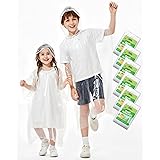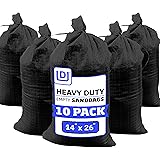Essential Supplies for Every Prepper’s First Aid Kit
Bandages and Dressings
In my experience, the first thing I look for in a first aid kit are bandages and dressings. You never know when a scrape or cut might come your way, especially when you’re out adventuring or working on your homestead. Adhesive bandages are a must-have because they’re handy for small wounds, but I also recommend including some larger gauze pads too. Trust me, having a variety will save you from a lot of stress!
Don’t forget to grab some medical tape; it’s essential for securing dressings. I’ve had to rig up makeshift bandages more times than I care to admit. And a roll of sterile gauze can work wonders for larger injuries, making it essential for any prepper’s kit.
Another great addition is a trauma dressing. When things get serious, you want to be prepared. I keep a few in my kit because you just never know what could happen—better to play it safe and be ready for anything!
Medication and Antiseptics
No prepper’s first aid kit is complete without some medications and antiseptics. I always pack a selection of over-the-counter pain relievers, like ibuprofen or aspirin. Trust me, when you’re in discomfort, a little pain relief can make a world of difference.
Antiseptic wipes and solutions are also critical. A good antiseptic can prevent infections, which can be quite serious when you’re away from hospitals or doctors.
Don’t forget to include any personal medications you might need. If there’s anything specific that you or your family members take regularly, you’ll want to make sure you have it handy. I keep a small pouch with my essentials right in my first aid kit to make it even easier.
Emergency Tools and Gear
Having the right tools in your first aid kit can really make a difference. I can’t stress enough the importance of having scissors and tweezers handy. Scissors are a must for cutting tape or gauze, and tweezers are great for splinters or removing debris from wounds.
If you’re traveling into remote areas, consider including a CPR mask in your kit. You never know when you might need it, and it’s an essential item for providing assistance in emergencies.
== > What if ... Get a FREE Subscription to PREPARE
Another handy item is a digital thermometer. Monitoring fever is crucial, especially in the wilderness! Being able to track temperature changes can give you better insight into someone’s health status.
Recommended Kit Types
General Use Kits
When I first started prepping, I went for a general use first aid kit. These kits typically come with a good range of supplies, making them perfect for everyday adventures. They usually have the basics plus some additional items like instant cold packs and emergency blankets.
Make sure to choose one that’s waterproof or include waterproof bags for the supplies. I can tell you from experience that nothing is worse than opening your kit after a rainy hike only to find everything soaked!
Consider one that comes with a sturdy case as well—something that will hold up in outdoor conditions, as you’ll want it to last through many uses.
Specialized Kits
If you’re planning on specific activities, specialized first aid kits can be a game changer. There are kits designed for hikers, cyclists, and even sports enthusiasts! They tend to focus on the types of injuries you might encounter in those activities.
For instance, a hiking kit might include items like snake bite kits or extra blister care, while a sports-focused kit may contain wrist splints and ice packs.
When I took up rock climbing, I invested in a specialized climbing first aid kit. The peace of mind knowing that I had the right supplies tailored to address climbing-related injuries was invaluable.
Customizable Kits
Eventually, I realized I wanted a kit tailored to my personal needs. I started building a customizable first aid kit, and let me tell you, it’s super satisfying! You can choose exactly what to include based on your lifestyle and the specific risks you might encounter.
This approach allows you to stock the items you know are essential for your family or specific activities. You can add more advanced supplies like splints or even a field guide for emergency care.
What’s great here is that you can tweak it anytime! If you go on a new adventure or realize you need more of something, just update your kit as needed and keep it fresh!
Maintenance and Checks
Regular Inventory Checks
One of the most crucial things I’ve learned is that you have to regularly check your first aid kit. It’s easy to forget about things, especially if you don’t use your kit frequently. I set a reminder on my phone to check mine every few months.
During these checks, I make sure to replace any expired medications or supplies. I can’t stress enough—expired items may not only be ineffective, but they could also lead to issues during a real emergency!
Plus, this is a great time to reassess whether your kit still meets your needs. As your lifestyle changes, so should your first aid kit.
Get Preparedness and Self-Reliance Tips. Subscribe Now!
Restocking After Use
Whenever I use something from my kit, I make it a priority to restock right away. If you wait too long, it’s likely you’ll forget, and you really don’t want to be empty-handed in an emergency.
I keep a little note or a checklist attached to my kit to remind me of what I’ve used and need to replace. It’s simple but incredibly effective and keeps my kit ready to go whenever I need it!
Plus, it helps to keep my mind at ease because I know I have everything I need for the next adventure or emergency situation.
Training and Knowledge
Having a kit is one thing, but knowing how to use it is a completely different ball game! I’ve taken a couple of first aid courses, and I can’t emphasize enough how valuable that was. Understanding basic skills like CPR, wound care, and how to assess injuries can save lives.
Many local organizations offer courses, and you can even find online resources. Remember, it’s not just about having the supplies—it’s about knowing how to use them effectively.
Additionally, keeping a handy reference guide in your kit can be a lifesaver when it comes to first aid protocols. Don’t underestimate the value of knowledge!
Choosing the Right First Aid Kit for Your Needs
Assessing Your Environment
When choosing the right first aid kit, think about where you spend most of your time. If you’re often outdoors, a kit with a waterproof case and supplies catering to outdoor mishaps is crucial!
For urban dwellers, a general use kit might be sufficient, but you might want to consider your daily activities, such as sports, hiking, or travel.
Ultimately, the right kit should reflect your lifestyle and risks—tailoring it accordingly will ensure you’re always prepared!
Considering Family and Personal Needs
Another key point is to consider the specific needs of your family or those who will be using the kit. If you have young kids, you might need more items for minor injuries like cuts or scrapes.
And for anyone with medical conditions, it’s prudent to customize your kit further to ensure you have necessary items like EpiPens or other specific medications.
Involving everyone in the assessment process can also help. I like to ask family members what they think we should include based on their experiences—you’d be surprised at what you might overlook!
Budgeting for Your First Aid Needs
Lastly, let’s touch on budgeting. First aid kits can range from super inexpensive to rather pricey, depending on where you shop and what you want in your kit. I’ve found that it’s smart to start with a basic kit and then add to it over time, rather than blow the budget all at once.
Look for sales—and don’t hesitate to make your own kit by purchasing items individually. This way, you can customize the quality and types of supplies without breaking the bank.
With a little strategizing, you can build a great kit—protecting you and your loved ones without emptying your wallet!
FAQ
1. What should I include in a basic first aid kit?
A basic first aid kit should include bandages, antiseptic wipes, over-the-counter pain relievers, scissors, and adhesive tape. These essentials will help you manage common injuries.
2. How often should I check my first aid kit?
I recommend checking your first aid kit every 3-6 months to ensure all supplies are stocked and not expired. It’s a good habit to keep your kit ready for any emergencies!
3. Can I build my own first aid kit?
Absolutely! Building your own first aid kit allows you to customize it based on your specific needs and activities. It’s a great way to ensure you have exactly what you need.
4. Should I take a first aid course?
Yes! Taking a first aid course is highly recommended. It will give you the skills and knowledge necessary to use the supplies in your kit effectively, which can be critical in emergencies.
5. How do I maintain my first aid kit?
To maintain your first aid kit, regularly check and replace any used or expired items. Create a checklist to keep track of what you have and what you need to restock after use.






